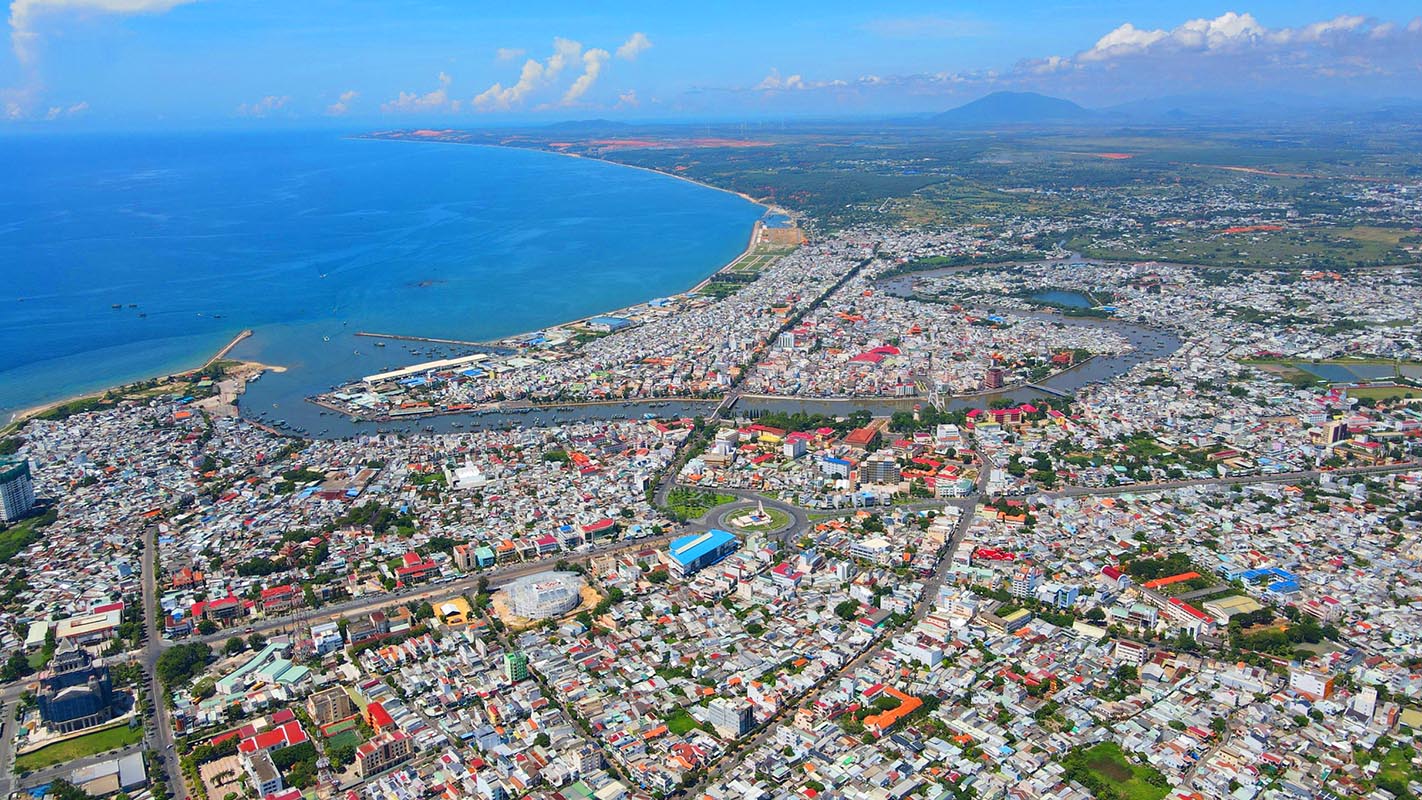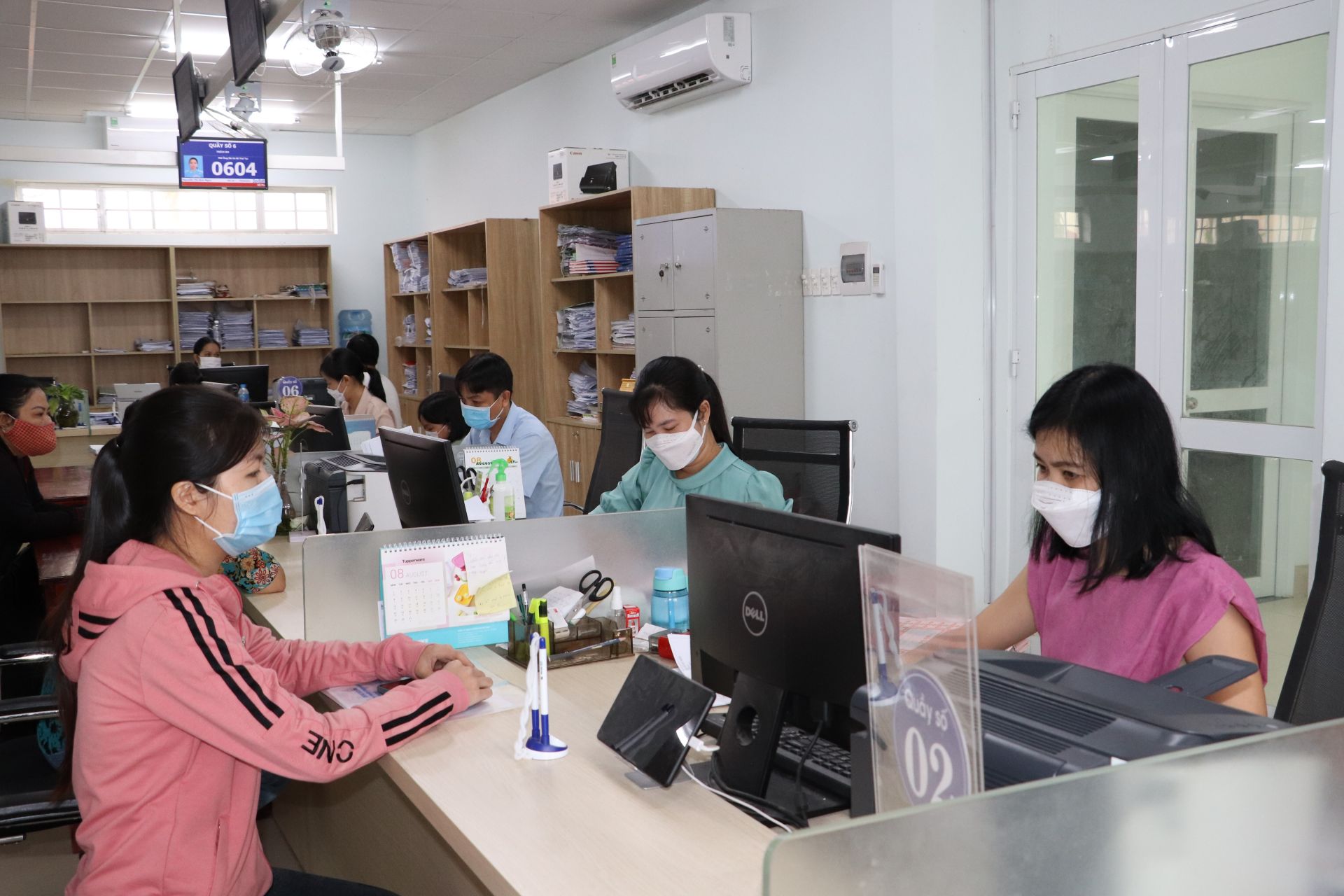Approval of Binh Thuan Province Planning for the period 2021 - 2030, vision to 2050 in Vietnam
What are the regulations on approval of Binh Thuan Province Planning for the period 2021 - 2030, vision to 2050 in Vietnam?

Approval of Binh Thuan Province Planning for the period 2021 - 2030, vision to 2050 in Vietnam (Internet image)
On December 27, 2023, the Prime Minister issued Decision 1701/QD-TTg approving the Planning of Binh Thuan province for the period 2021–2030, with a vision to 2050.
Approval of Binh Thuan province planning for the period 2021–2030, vision to 2050 in Vietnam
(1) Development objectives until 2030
* Overall objectives
Continuously improve people's lives and social welfare, aiming for inclusive, sustainable development, ensuring all people can easily access development opportunities and enjoy the fruits of the development process. Promote economic structural transformation and innovate growth models. Mobilize and use resources reasonably and effectively for comprehensive development on the basis of creating a modern and sustainable development ecosystem; Developing and applying science and technology, innovation, promoting green growth, and forming a low-waste economy, with a focus on developing 3 pillars: (1) Industry, with the core of clean energy industry, renewable energy, processing industry, manufacturing, and high-tech industry organized into industry clusters; (2) Services, with various types of tourism, health care, entertainment, and marine sports services; training services and research and application of science and technology; Services of Logistics; (3) Agriculture, with a focus on ecological agriculture, applies high technology to agricultural production chains - industrial processing.
By 2030, Binh Thuan will become a province with dynamic, rapid, and sustainable development; strong, rich from the sea, with a per capita income (GRDP) higher than the regional and national average; a national and international beach resort center; one of the country's green energy centers; contributing to reducing greenhouse gas emissions; implementing the commitment to achieve net zero emissions by 2050; and aiming to form one of the regional and national technology training and development centers. National defense, security, and sovereignty over seas and islands are firmly guaranteed; strong party organizations and political systems; and the great solidarity of the entire people has been strengthened.
* Specific goals and targets
- Economic:
+ The average GRDP growth rate in the period 2021-2030 reaches 7.5 - 8.0%, of which: Industry - construction increases 11 - 12%/year (Industry increases 12 - 13%/year, construction increases 10 - 11%/year); services increase by 7.0 - 7.5%/year; agriculture, forestry, and fisheries increase by 2.5 - 3.0%/year.
+ Economic structure: Industry - construction accounts for about 44 - 48%; service industry accounts for 31 - 34%; Agriculture, forestry and fisheries account for about 15 - 16% and product taxes 5 - 6% in the province's GRDP.
+ The proportion of processing and manufacturing industries in the province's GRDP reaches about 18–20%.
+ Digital economy accounts for about 30%–35% of the province's GRDP.
+ Average GRDP/person reaches about 7,800–8,000 USD.
+ The contribution of total factor productivity (TFP) to economic growth in 2030 is about 50%.
+ The average growth rate of social labor productivity in the period 2021–2030 will reach about 6.0 - 7.0%/year.
+ State budget revenue in the area increases by an average of 6.5 - 7.5%/year in the period 2021–2030.
+ Attracting investment capital for social development reaches about 36 - 38% compared to GRDP in the period 2021–2030.
+ Attracted 16 million tourists, of which international visitors accounted for 15 - 20%.
+ Urbanization rate is about 50.8%.
- Regarding society:
+ Maintain the natural population growth rate at 0.8%/year.
+ Average life expectancy reaches 76.5 years.
+ Average income per capita in 2030 will increase by 2.7–3.5 times compared to 2020.
+ Reduce the average poverty rate by 0.4 - 0.6%/year (according to poverty standards for each period).
+ Labor structure: The proportion of labor in agriculture, forestry, and fisheries accounts for 29.4%; industry-construction 30.8%; and services 39.7%.
+ The rate of trained workers is over 80% (of which 39–40% have degrees and certificates).
+ The rate of preschools meeting national standards is over 60%; the primary school level reaches about 80%; the secondary school level reaches about 70%; The high school level reached about 65%.
+ The number of doctors/10,000 people reaches 10–10.5 doctors.
+ Hospital beds per ten thousand people reached 32 beds.
+ The rate of the population participating in health insurance reached over 95%.
+ The rate of workers participating in social insurance compared to the labor force in the age group is about 50–55%.
+ The malnutrition rate of children under 5 years old is below 4.5%.
+ Increase the target of average housing floor area per capita by 2030 of the whole province to 30 m2/person, of which the average housing floor area in urban areas strives to reach about 32 m2/person, the average housing floor area in rural areas strives to reach about 27.93 m2/person.
+ The rate of communes meeting new rural standards is about 95%, of which 50% meet advanced new rural standards; There are at least 7 district-level units meeting new rural standards.
- Regarding resource use and environmental protection:
+ Maintain a rate of 100% of the population being supplied with enough water for daily needs; ensure water supply capacity is not lower than 95% of total water demand for other socio-economic sectors.
+ Maintain the rate of 100% of households using hygienic water, of which at least 95% of households can use clean water according to standards of the Ministry of Health; 100% of household waste is classified at source and collected according to regulations.
+ The rate of urban solid waste (CTR) collected and treated according to standards and regulations reached 100%, of which 90% of the generated solid waste is recycled, reused, recovered energy, and produced organic fertilizer using advanced technologies to protect the environment.
+ The proportion of industrial parks with centralized wastewater treatment systems meeting environmental technical standards is 100%.
+ The proportion of industrial clusters with centralized wastewater treatment systems operating to meet environmental technical standards is 100%.
+ The rate of facilities causing serious environmental pollution will be thoroughly treated by 100% by 2025 and maintained at that rate in the following years.
+ Forest coverage rate was maintained at 43% for the entire period 2021–2030.
- Regarding national defense and security:
+ Strengthen management of national defense and security; proactively grasp the situation, not be passive or surprised; perform well in preventing traditional and non-traditional security challenges, ensuring the building of an all-people defense posture associated with the People's security posture; ensure order, social safety, peaceful life, and happiness for the People.
+ Construction of a number of projects combining economics and defense to ensure handling of all conflict situations, causing insecurity, social order, and national sovereignty.
(2) Vision for 2050
By 2050, Binh Thuan will become an important development pole of the Central Coast region with a strong, sustainable marine economy and modern economic structure; is a clean energy center, a center providing national and international tourism services, health care, and high-quality education; is a regional and national center of science, technology, and innovation associated with modern coastal cities; the people's material and spiritual lives have reached a high level compared to the region and the whole country; and national defense, security, and sovereignty over seas and islands are firmly guaranteed.
More details can be found in Decision 1701/QD-TTg, taking effect on December 27, 2023.
Ho Quoc Tuan
- Key word:
- Binh Thuan Province Planning
- in Vietnam
- Number of deputy directors of departments in Vietnam in accordance with Decree 45/2025/ND-CP
- Cases ineligible for pardon in Vietnam in 2025
- Decree 50/2025 amending Decree 151/2017 on the management of public assets in Vietnam
- Circular 07/2025 amending Circular 02/2022 on the Law on Environmental Protection in Vietnam
- Adjustment to the organizational structure of the Ministry of Health of Vietnam: Certain agencies are no longer listed in the organizational structure
- Vietnam aims to welcome 22-23 million international tourists in Vietnam in 2025
-

- Emergency response and search and rescue organizations ...
- 10:29, 11/09/2024
-

- Handling of the acceptance results of ministerial ...
- 09:30, 11/09/2024
-

- Guidance on unexploded ordnance investigation ...
- 18:30, 09/09/2024
-

- Sources of the National database on construction ...
- 16:37, 09/09/2024
-

- General regulations on the implementation of administrative ...
- 11:30, 09/09/2024
-

- Notable new policies of Vietnam effective as of ...
- 16:26, 11/04/2025
-
.Medium.png)
- Notable documents of Vietnam in the previous week ...
- 16:21, 11/04/2025
-
.Medium.png)
- Notable documents of Vietnam in the previous week ...
- 16:11, 02/04/2025
-
.Medium.png)
- Notable new policies of Vietnam to be effective ...
- 16:04, 02/04/2025
-
.Medium.png)
- Notable new policies of Vietnam effective from ...
- 14:51, 21/03/2025
 Article table of contents
Article table of contents
